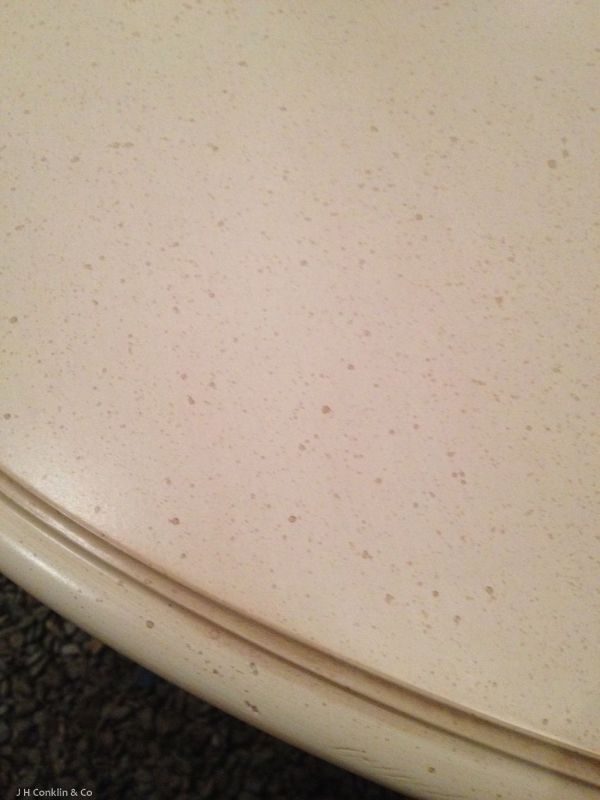Replicable Spatter and Speckle Techniques
Finishers describe various methods for achieving predictable spatter or speckle. June 30, 2014
Question (WOODWEB Member) :
I have this spatter over the glaze coat by using a CAT Tjr touch up gun with the air cap removed, fairly soft air and the thin glaze liquid choked way back. Messing around with the cheater valve and fluid setting changed the size of the spatter so I could match the sample - finally. My hand was about two feet above the table and I aimed at the back wall of the both while making about one foot step passes backing across the table. How else might I attain these spatters, because I feel more like I lucked out than that I discovered a reliable method?

Click here for higher quality, full size image
Forum Responses
(Finishing Forum)
From contributor H:
When I used to spray in a metal shop it was quite common for me to apply a textured finish. I did this by reducing the atomizing pressure on the until I got the right particle size. You can do this with most any gun, less air pressure means less breakup means and more of a spatter-type finish. A little practice and save your money for a new gun.
From contributor K:
I use a 1 1/2" chipping brush with the bristles cut short. Thin down some glaze with mineral spirits, dip the brush in, then pull through the bristles with your thumb.
From contributor M:
Use a nylon bristle brush that would normally be used for cleaning your guns. Just flick it with your thumb.
From contributor F:
Contributor H has the right idea. Metal finishers have to do virtually the same thing but do it in a controlled and repeatable manner, so the size and density of the texture or spatter is consistent and within customer specifications. This is achieved by noting all the settings on your equipment, mixing the material the same consistency, spraying from the same distance and number of passes etc. Record and use the same parameters every time and you will be able to reproduce the desired effect every time.
From Contributor R:
Back in the 70's 80's we used a tooth brush with mineral spirits and glaze or oil color tint thin to achieve opacity and size. It was a bit more time consuming but better control.
